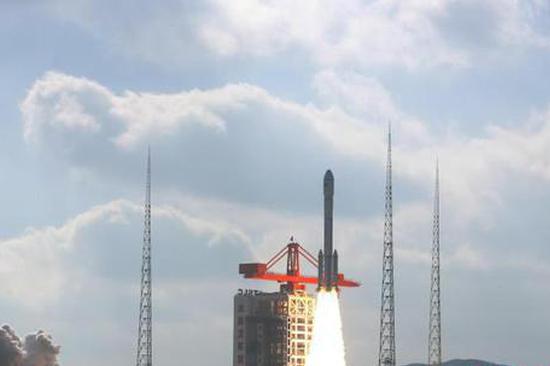China launches 18 satellites aboard one rocket, advancing global internet service

China launches the Qianfan polar orbit satellite group-03 on Dec.5, 2024, from the Taiyuan Satellite Launch Center in Shanxi Province, using a modified Long March-6 carrier rocket. (Photo:China News Service/Guo Houze)
(ECNS) -- China successfully launched the Qianfan polar orbit satellite group-03 at 12:41 p.m. on Thursday from the Taiyuan Satellite Launch Center in Shanxi Province, using a modified Long March-6 carrier rocket, according to the China Aerospace Science and Technology Corporation (CASC).
The mission, with one rocket carrying 18 satellites, brought the total number of Qianfan in-orbit satellites to 54, underscoring China’s advancements in low-Earth orbit satellite technology.
The Qianfan polar orbit satellite group-03 comprises of 18 low-Earth orbit broadband internet satellites, representing the third batch of first-generation satellites in the Qianfan constellation developed by Shanghai Spacecom Satellite Technology Ltd..
All three batches have been successfully launched into space using the modified Long March-6 carrier rocket.
The Qianfan constellation is an ambitious project aimed at establishing a satellite internet network.
Phase one aims to deploy 648 satellites for regional network coverage. Phase two is set to expand the constellation to 1,296 satellites for global connectivity. In Phase three, more than 15,000 satellites will deliver a comprehensive range of integrated services.
The Qianfan constellation is set to deliver global commercial satellite internet services by 2025, supporting industries such as transportation, renewable energy, smart cities, smart agriculture, emergency response, and the low-altitude economy.
The Long March-6, researched by the CASC eighth academy, is China's first medium-lift rocket integrating solid and liquid propellants. It can carry payloads exceeding 4.5 metric tons to a 700-kilometer sun-synchronous orbit.
During this mission, the Long March-6 rocket faced extreme cold conditions, with temperatures dropping to minus 26 degree Celsius after recent snowfall.
Ground crews added insulation to the launch tower, increased air conditioning temperatures, and used a special connector that kept the rocket and satellites warm until liftoff, ensuring better protection for the satellite launch.
The mission marks the 550th flight of the Long March series of carrier rockets.

